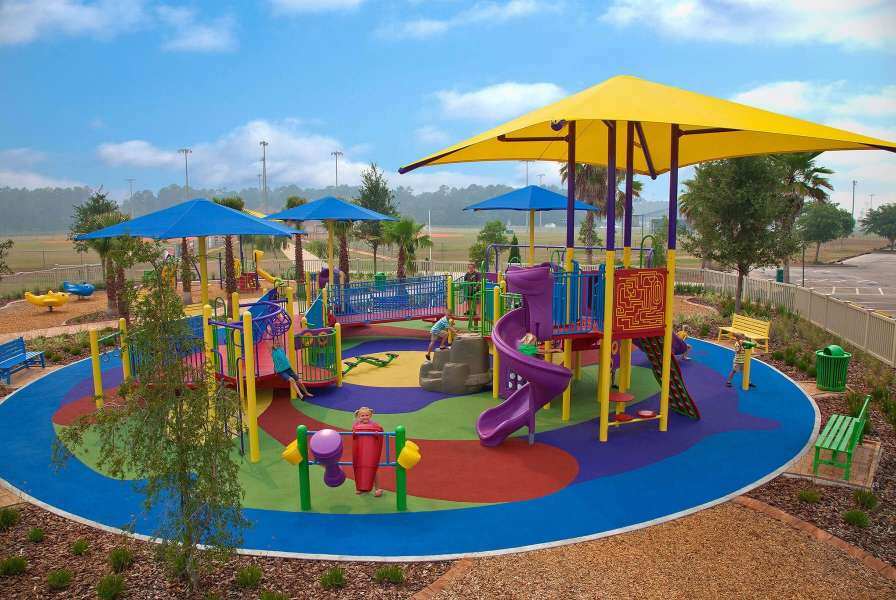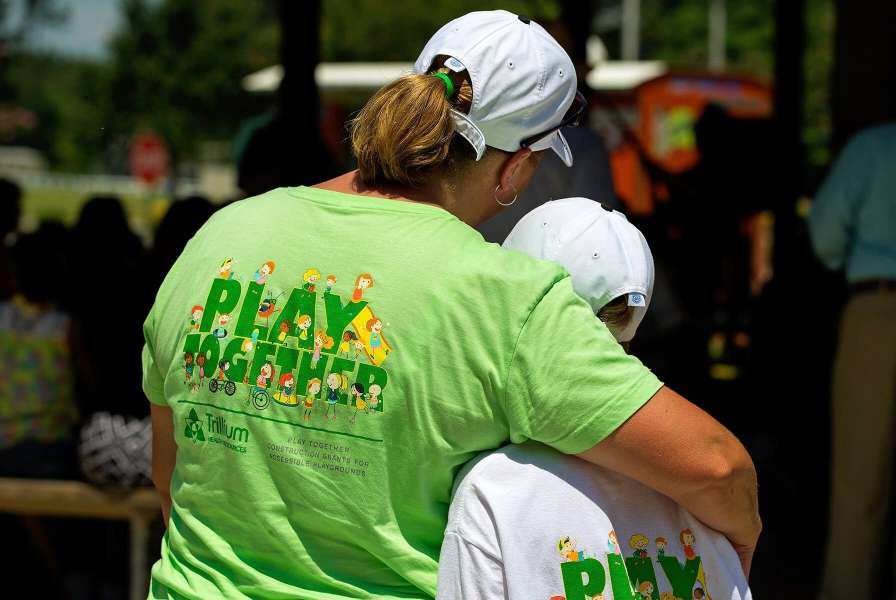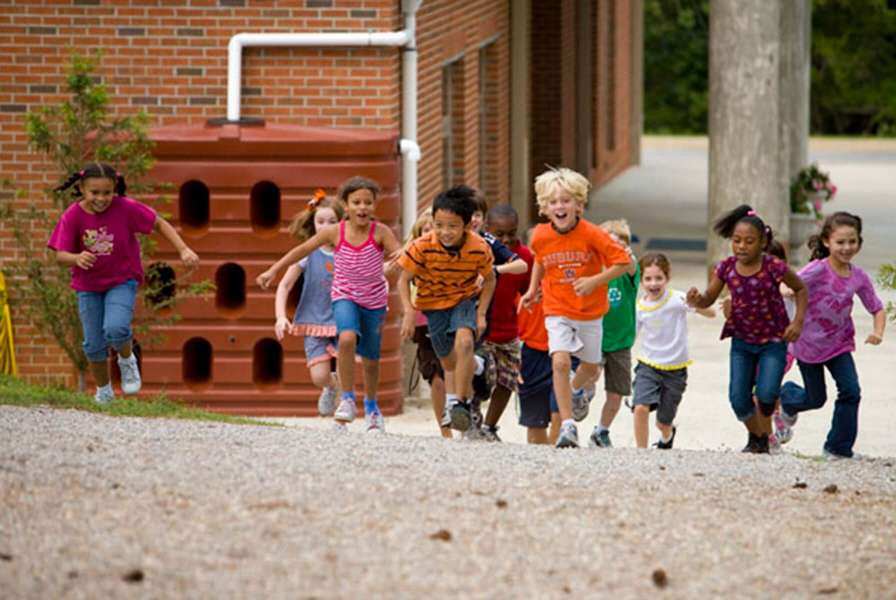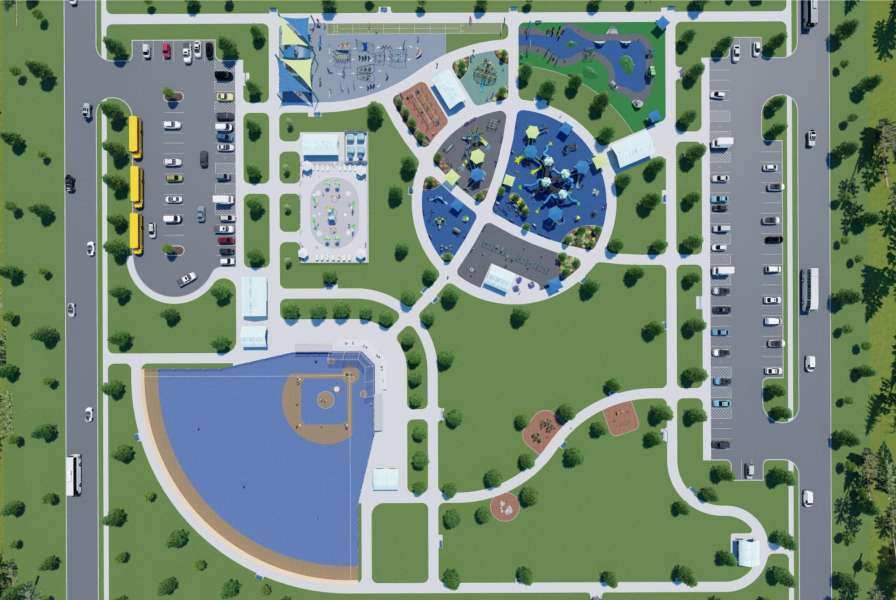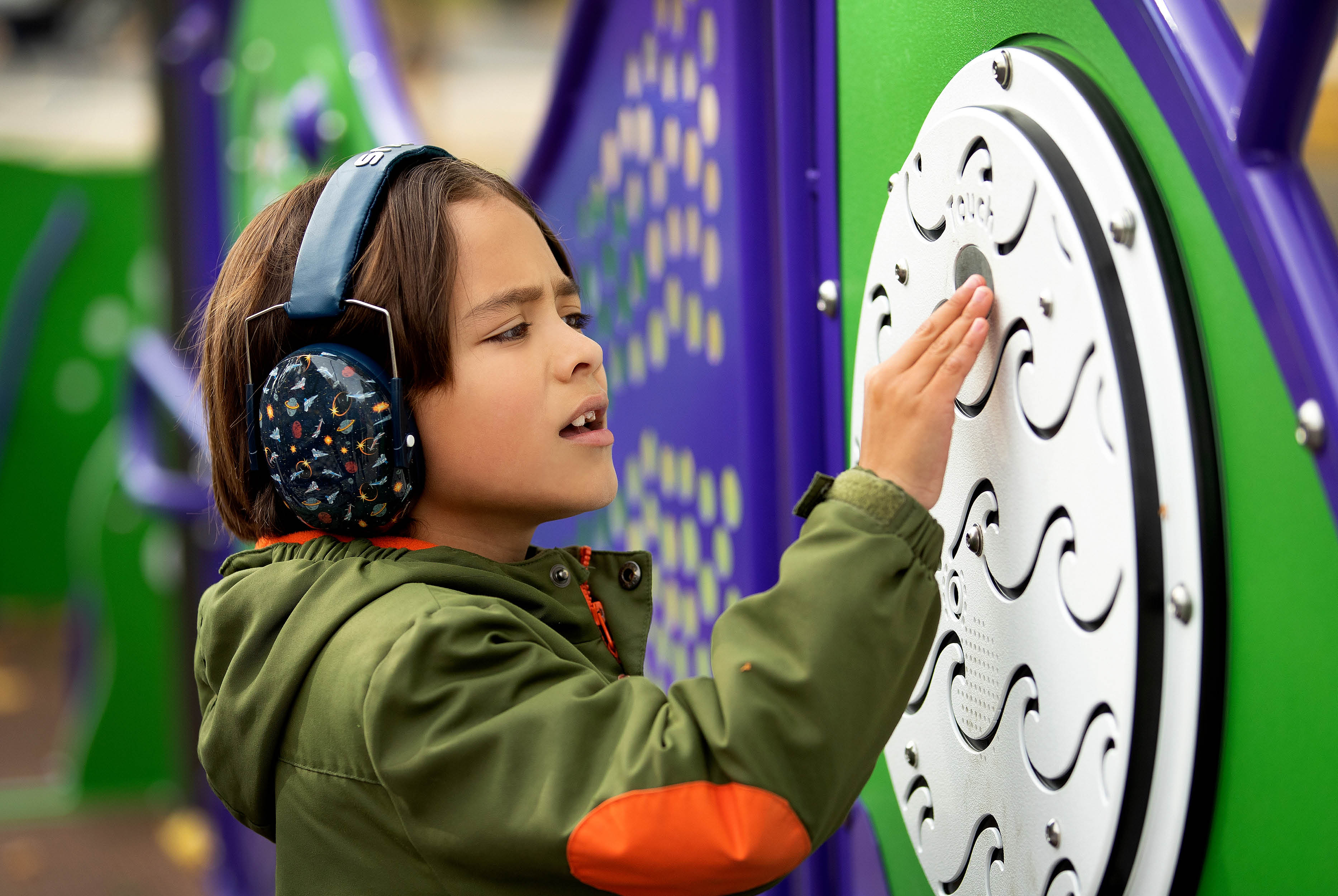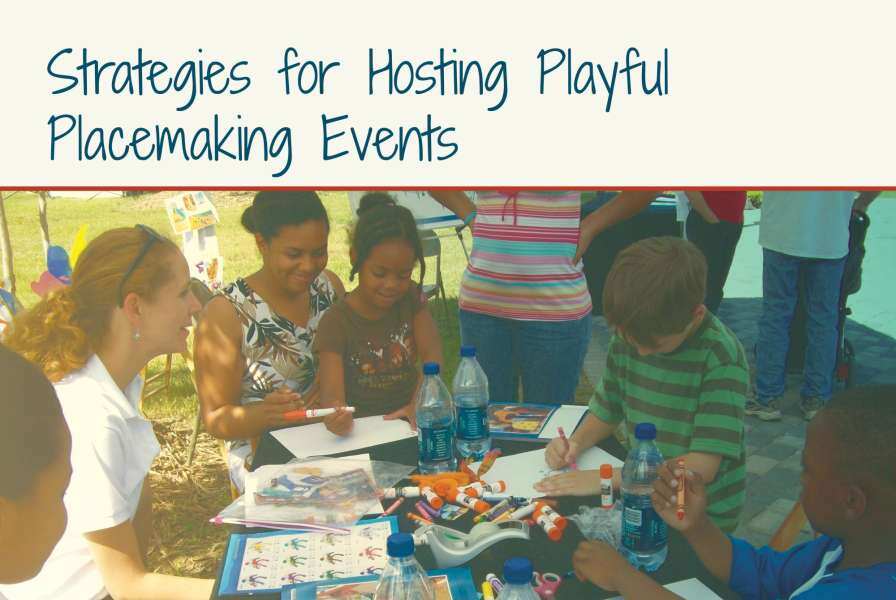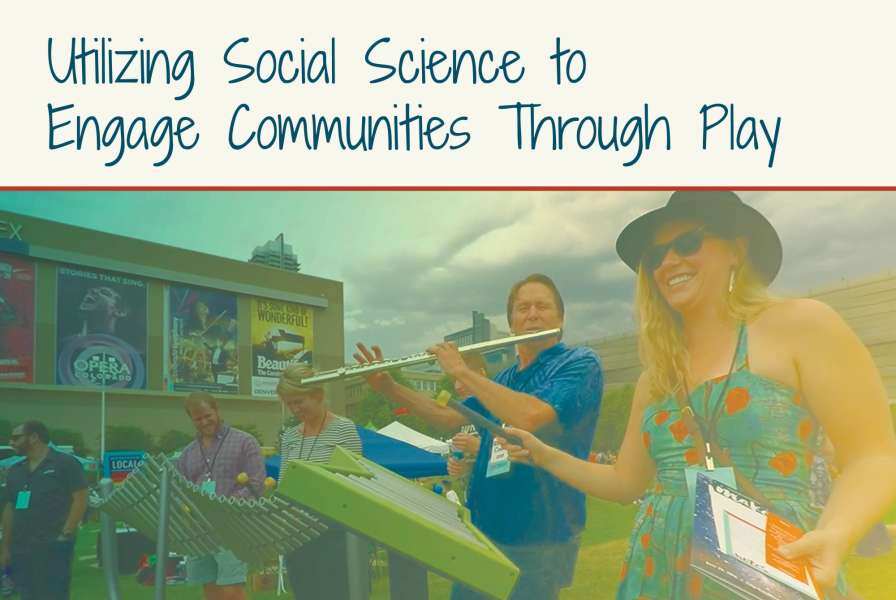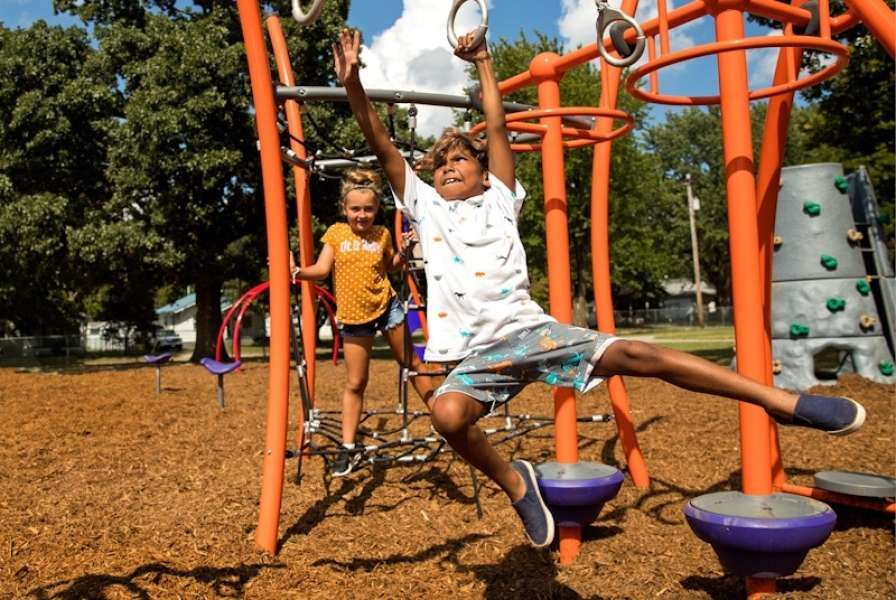Play and recreation are the foundation for learning. They are a critical component of healthy communities and the physical, social, emotional, and intellectual development of children. Through child-centered free play, children develop fine and gross motor skills, communication and language skills and engage in activities that promote various types and forms of play such as dramatic, cooperative, and constructive play nurtures a child’s individual learning style and increases their learning potential. Providing users with compliant play and recreational environments will allow them to be as physically active as possible while growing healthy and strong, and in turn positively affect families and communities.
Play value can be described as how play affordances are read in the environment, which motivates and reinforces play and recreation. Surfacing offers a vast array of opportunities to infuse play value into the overall design of the environment. Surfacing options and features should help to increase the overall play value and increase the user experiences of any outdoor environments.
Color
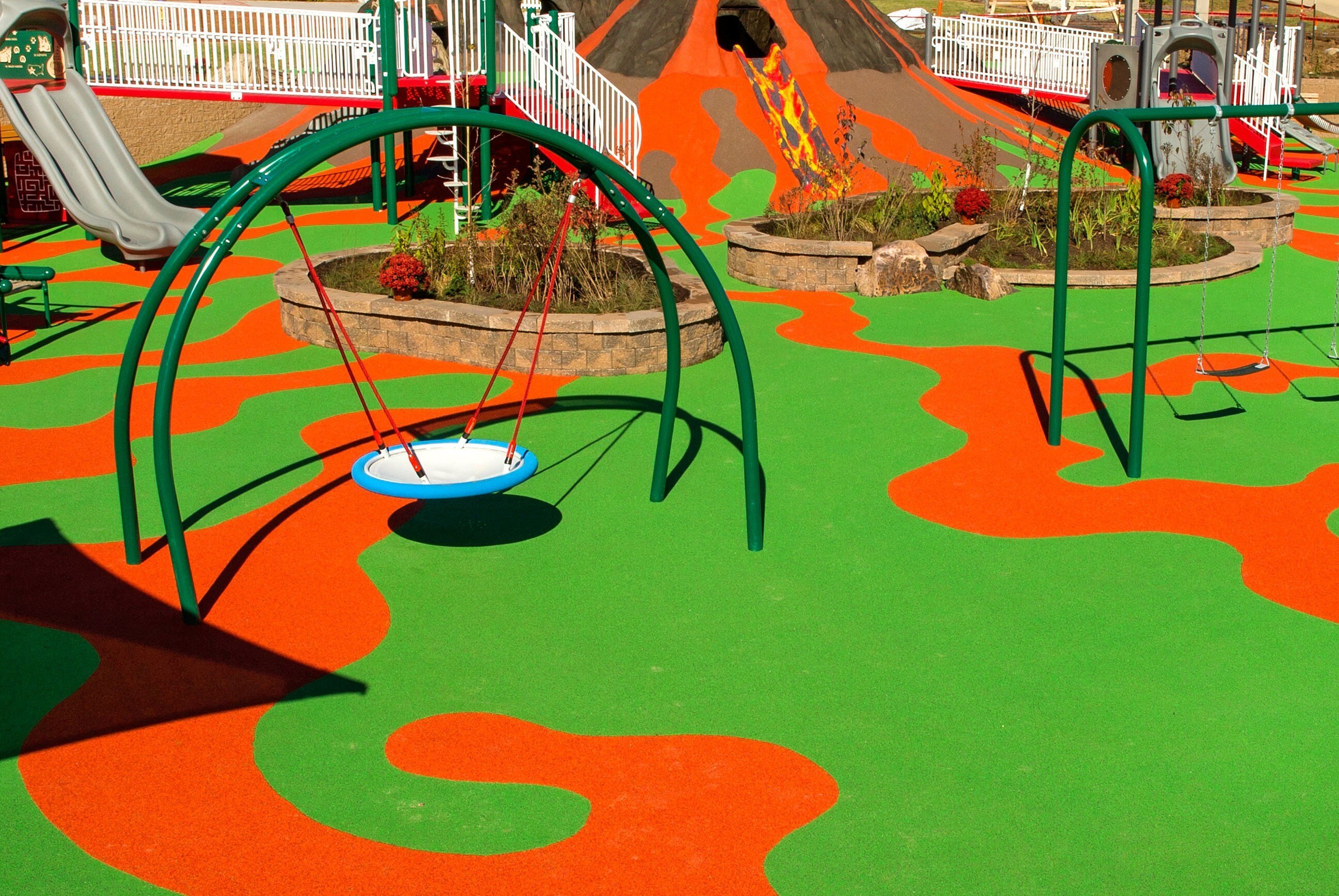 Using an assortment of colors can help visually organize a play environment so that it is easier to understand and navigate. Color often is used to create visible pathways or landscapes throughout the environment, enhancing the overall aesthetic appeal. Using designs or shapes in assorted colors can lead to spontaneous play behaviors as children develop their own games and have opportunities to reinforce learning outdoors in fun and creative ways.
Using an assortment of colors can help visually organize a play environment so that it is easier to understand and navigate. Color often is used to create visible pathways or landscapes throughout the environment, enhancing the overall aesthetic appeal. Using designs or shapes in assorted colors can lead to spontaneous play behaviors as children develop their own games and have opportunities to reinforce learning outdoors in fun and creative ways.
Texture & Design
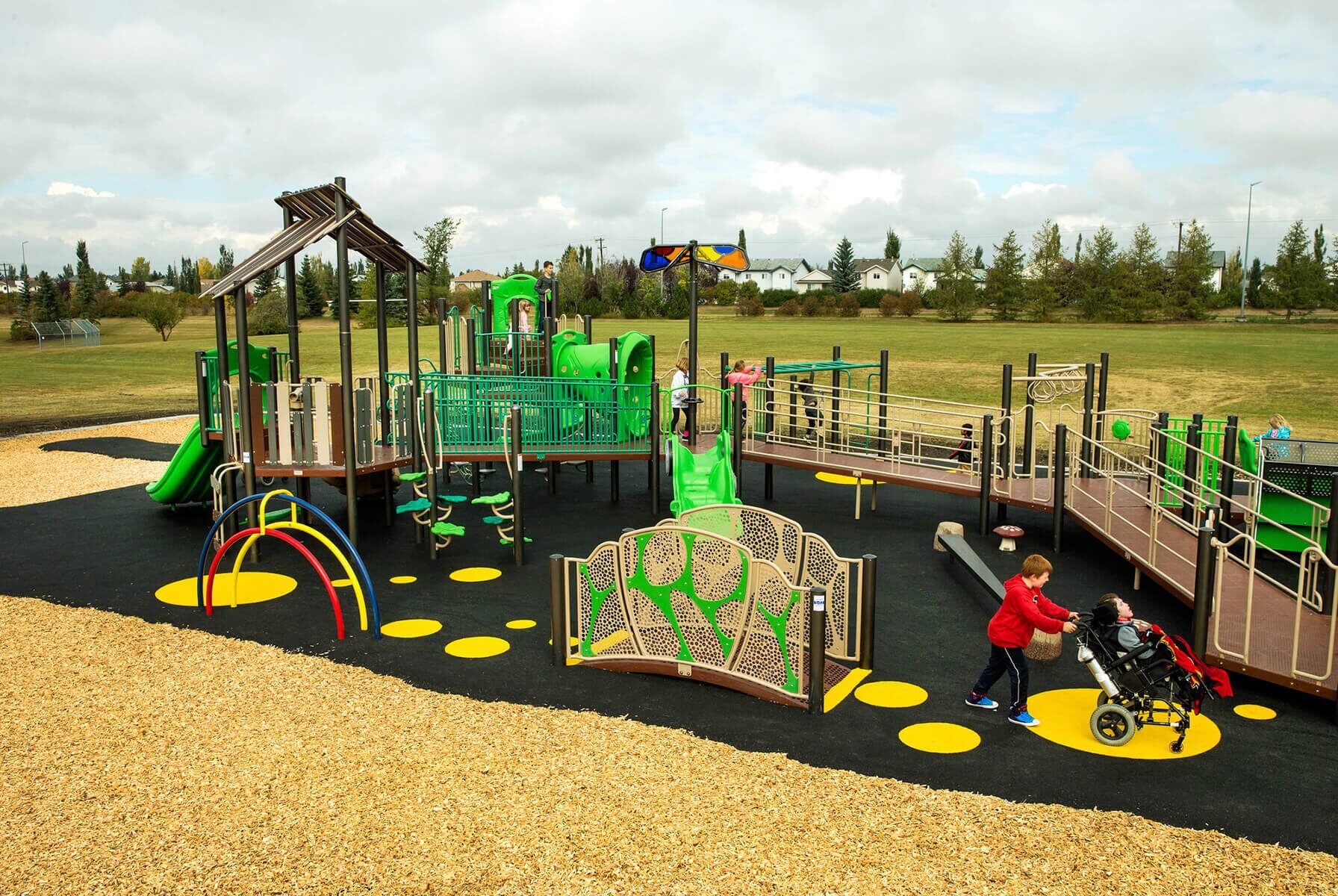 Surfacing design can be maximized by utilizing several types of surfacing within a play or recreational area. In addition to color, the varying textures can enhance the overall design, promote sensory rich play experiences, enhance imaginative play, and encourage movement and exploration. Varying the surface materials can also provide aesthetic appeal and organization of the space.
Surfacing design can be maximized by utilizing several types of surfacing within a play or recreational area. In addition to color, the varying textures can enhance the overall design, promote sensory rich play experiences, enhance imaginative play, and encourage movement and exploration. Varying the surface materials can also provide aesthetic appeal and organization of the space.
Loose parts
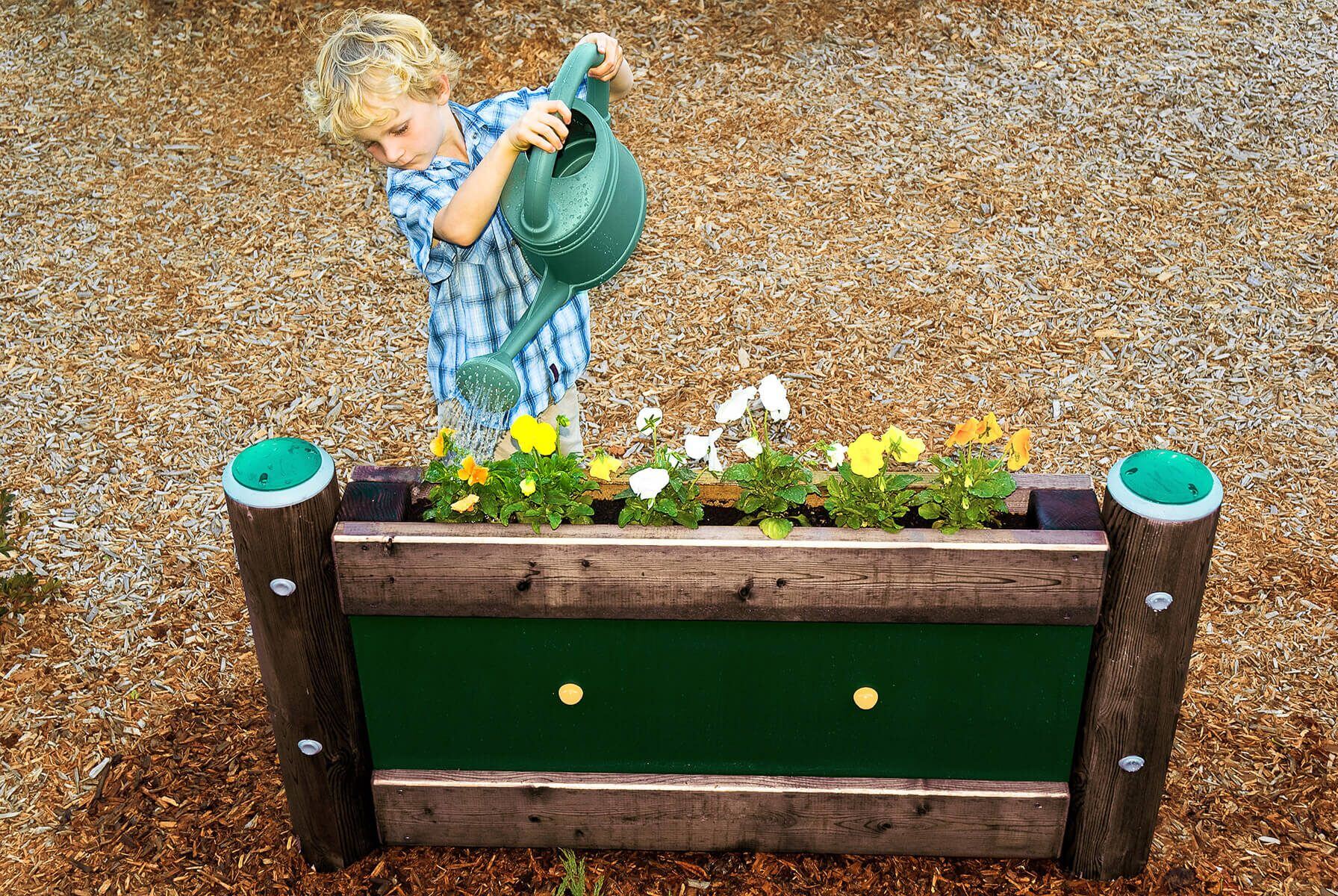 Portable materials or “loose parts” support and stimulate spontaneous and creative play, and are critical components of playgrounds, fitness areas, or multipurpose environments. Sand, gravel, or EWF used around PIP can provide a multisensory experience as children use tools to construct and experiment with the material. Creating planting pockets outside use zones and naturalized playgrounds that use child-friendly plants can also provide play experiences and loose parts for children to engage in dramatic play and recreation activities.
Portable materials or “loose parts” support and stimulate spontaneous and creative play, and are critical components of playgrounds, fitness areas, or multipurpose environments. Sand, gravel, or EWF used around PIP can provide a multisensory experience as children use tools to construct and experiment with the material. Creating planting pockets outside use zones and naturalized playgrounds that use child-friendly plants can also provide play experiences and loose parts for children to engage in dramatic play and recreation activities.
Themes
 Themes can be dramatically carried out through surfacing designs, transforming the play and recreational environment into practically anything from a life size board game to a baseball field, or even an ocean surrounding a ship. Creative theming can make a play and recreational environment special and unique and often becomes the identifying factor of the location. Themes can promote dramatic play, encourage physical activity, prompt spontaneous games, and bringing learning outdoors. Communities can apply themes through custom surface designs that relate to their local history, environment, and culture, or utilize contrasting color inlays to add logos that recognize a donor or sponsor.
Themes can be dramatically carried out through surfacing designs, transforming the play and recreational environment into practically anything from a life size board game to a baseball field, or even an ocean surrounding a ship. Creative theming can make a play and recreational environment special and unique and often becomes the identifying factor of the location. Themes can promote dramatic play, encourage physical activity, prompt spontaneous games, and bringing learning outdoors. Communities can apply themes through custom surface designs that relate to their local history, environment, and culture, or utilize contrasting color inlays to add logos that recognize a donor or sponsor.
Learning
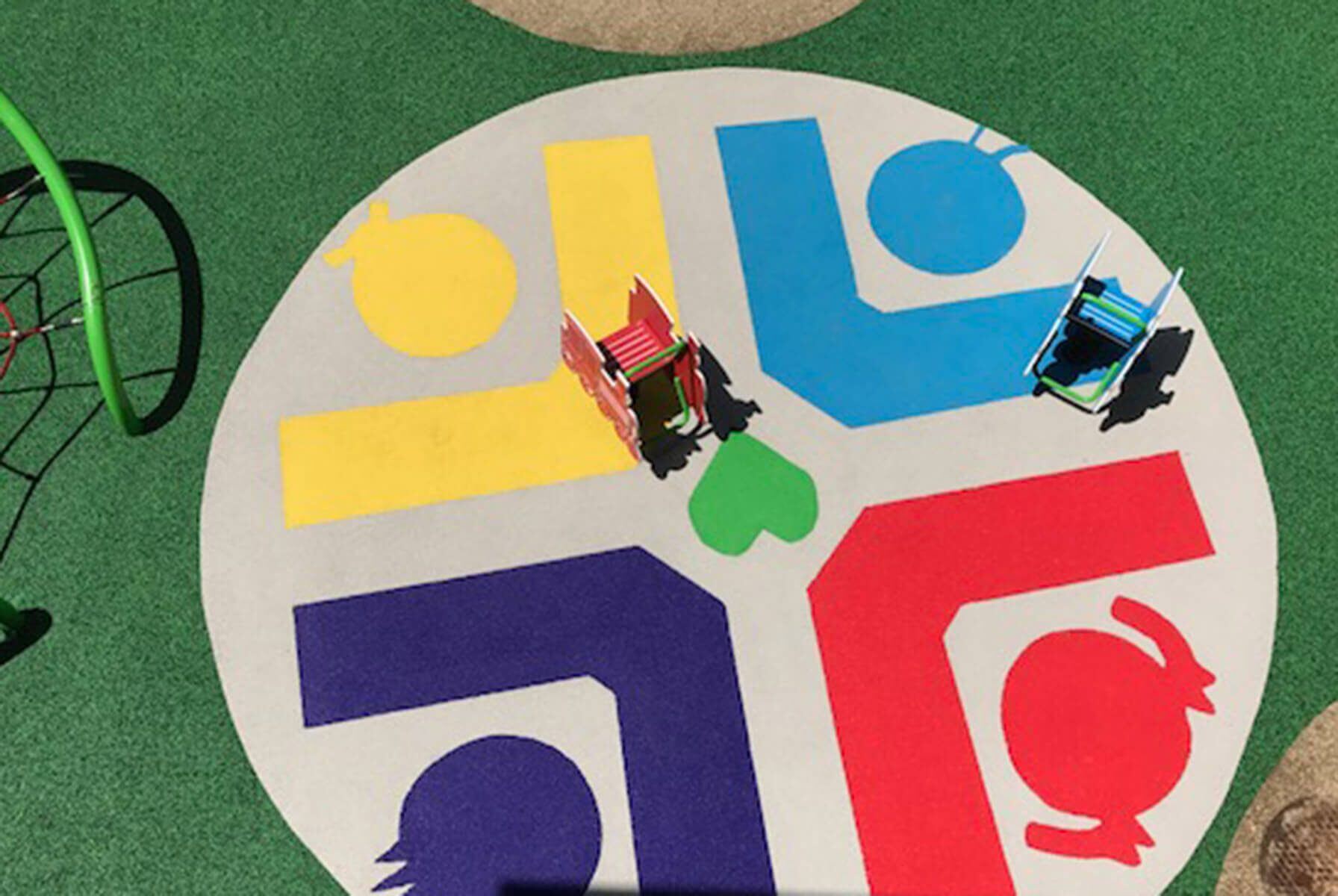 Schools, early childhood centers, and parks are often looking for ways to bring fun learning opportunities outside for hands-on experiences and to promote engagement between children and adults. There are ways to utilize PIP and tile surfacing designs to promote learning and reinforce academic skills: Tic-Tac-Toe (Math), Object Identification (Literacy), Maps (Social Studies), and Lifecycles (Science).
Schools, early childhood centers, and parks are often looking for ways to bring fun learning opportunities outside for hands-on experiences and to promote engagement between children and adults. There are ways to utilize PIP and tile surfacing designs to promote learning and reinforce academic skills: Tic-Tac-Toe (Math), Object Identification (Literacy), Maps (Social Studies), and Lifecycles (Science).
Games & Activities
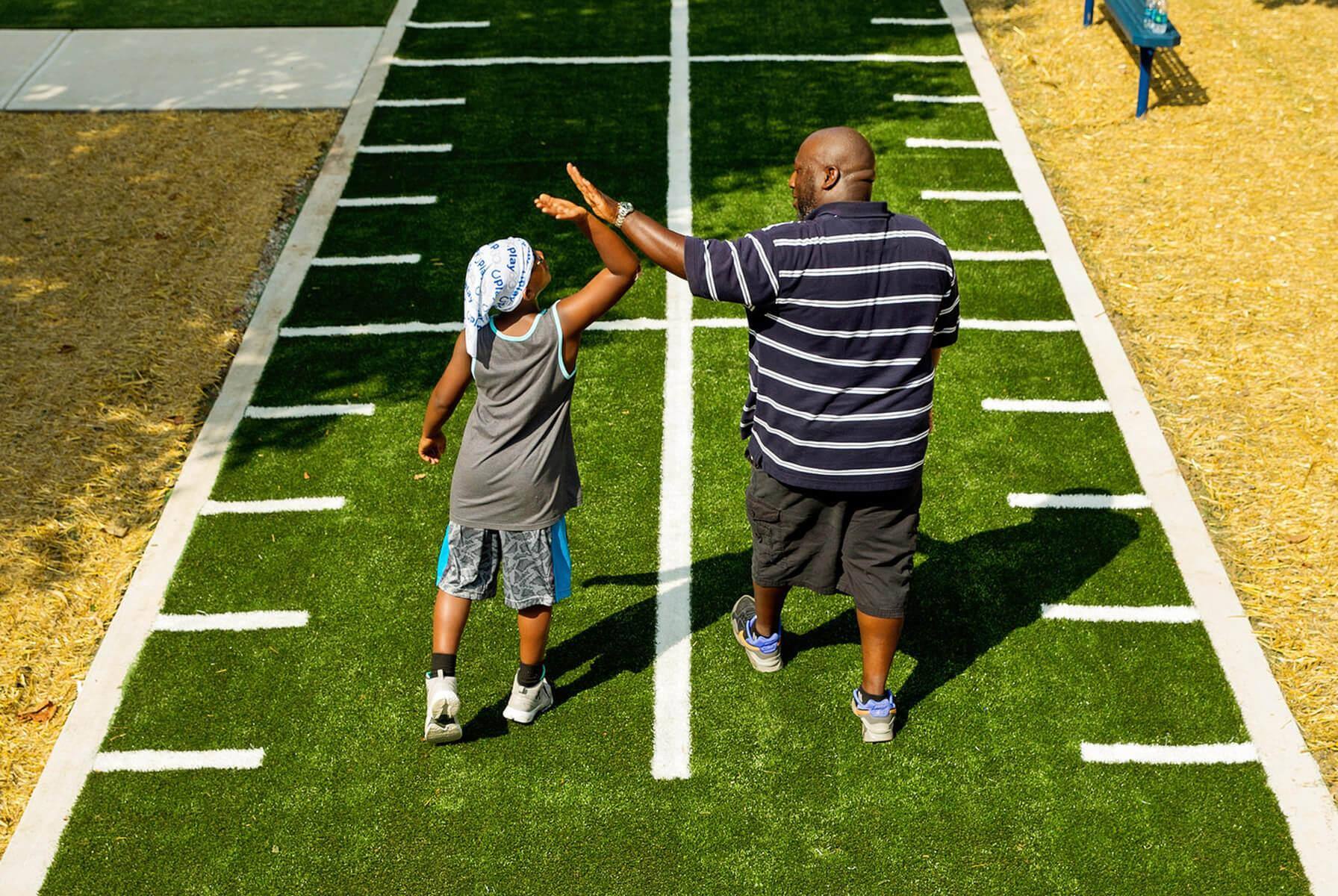 Children need opportunities to learn how to cooperate, understand sportsmanship, and to follow rules of a simple game or activity. PIP and tile surfacing can offer exciting ways to incorporate favorite childhood games, and it can help designate areas for activities that encourage physical activity.
Children need opportunities to learn how to cooperate, understand sportsmanship, and to follow rules of a simple game or activity. PIP and tile surfacing can offer exciting ways to incorporate favorite childhood games, and it can help designate areas for activities that encourage physical activity.
Sound
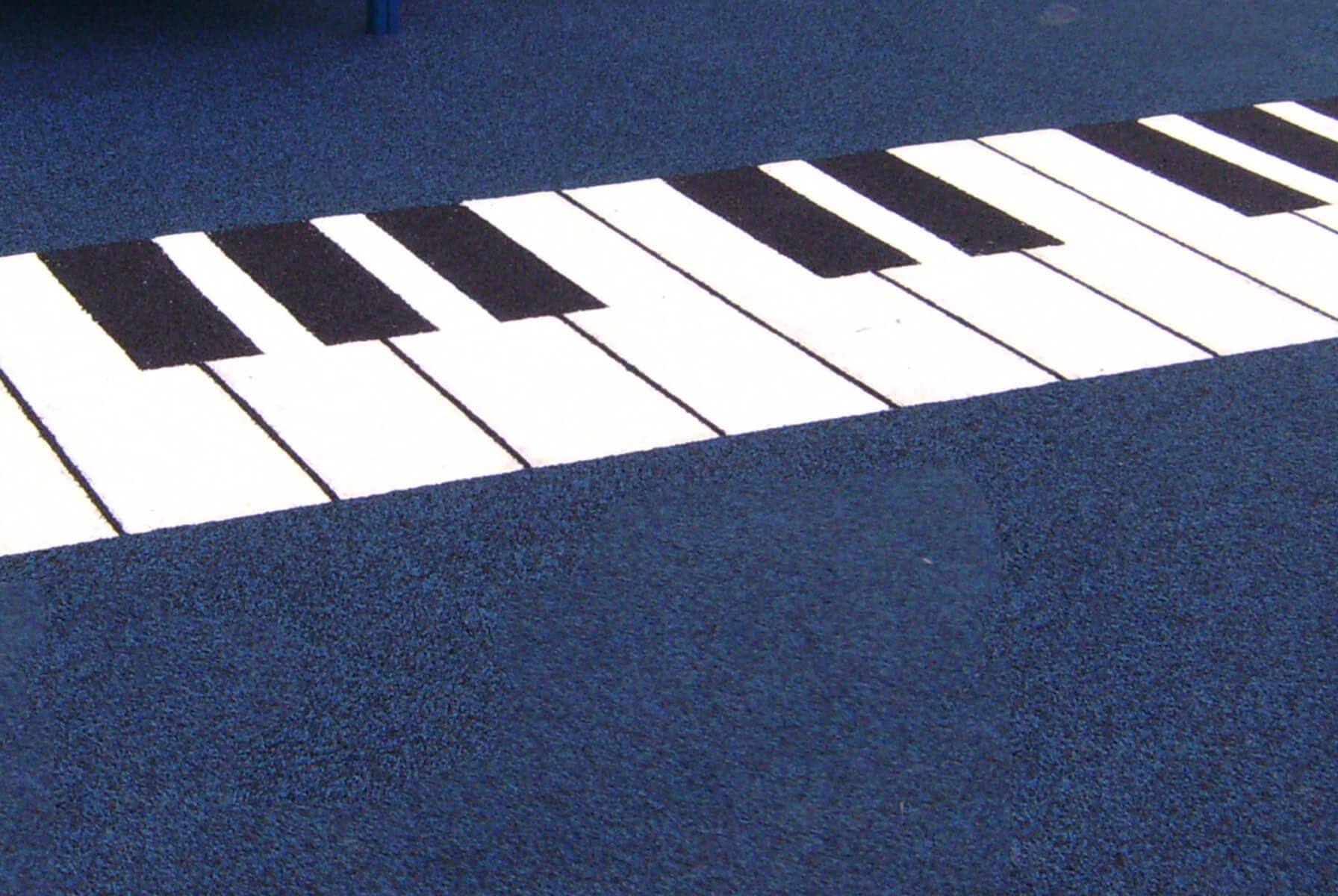 Including auditory sound in an environment will enhance the hands-on experience and promote socialization among children, families, and others. Consider including musical instruments in your installation to promote these activities. Surfacing in these areas can be used to provide routes of travel, designate recreational areas, create a “dance floor,” and enhance creativity. Musical elements such as piano keys or musical notes designed in the unitary surfacing can offer sensory rich experiences for people of all ages and abilities.
Including auditory sound in an environment will enhance the hands-on experience and promote socialization among children, families, and others. Consider including musical instruments in your installation to promote these activities. Surfacing in these areas can be used to provide routes of travel, designate recreational areas, create a “dance floor,” and enhance creativity. Musical elements such as piano keys or musical notes designed in the unitary surfacing can offer sensory rich experiences for people of all ages and abilities.
Hills & Mounds
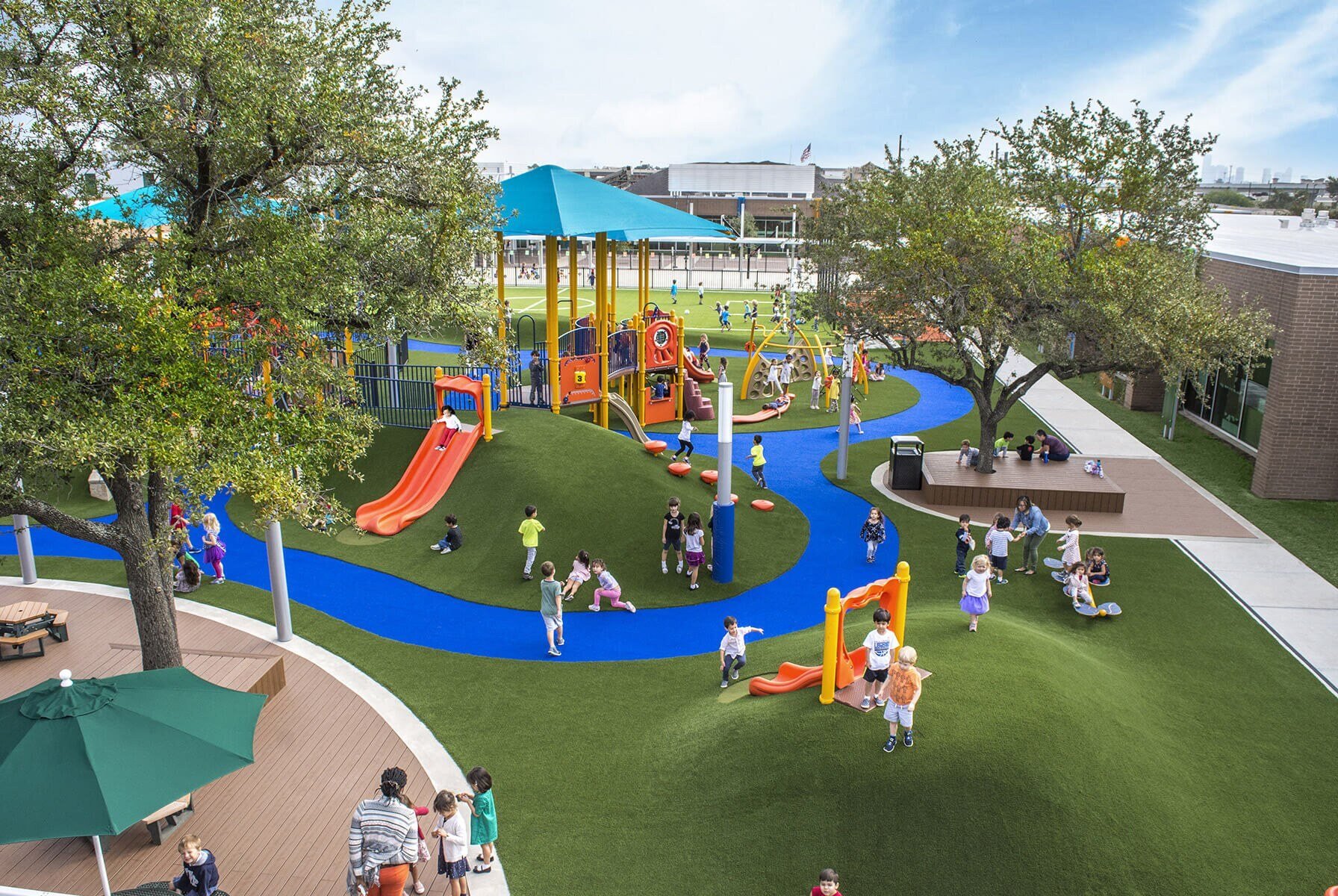 Elements such as hills and mounds can increase the play value of an environment by providing new points of view for discovery, physical activity opportunities for both children and adults, and changes of topography to enhance the overall design of the space. Children will be able to climb the hills and use the inclination to roll down the surface, increasing physical activity. In addition, slides can be built in to the hillside, taking advantage of the existent topography. Surfacing manufacturers will be able to recommend the best type of surfacing for the space and slope.
Elements such as hills and mounds can increase the play value of an environment by providing new points of view for discovery, physical activity opportunities for both children and adults, and changes of topography to enhance the overall design of the space. Children will be able to climb the hills and use the inclination to roll down the surface, increasing physical activity. In addition, slides can be built in to the hillside, taking advantage of the existent topography. Surfacing manufacturers will be able to recommend the best type of surfacing for the space and slope.
Accessibility & Routes of Travel
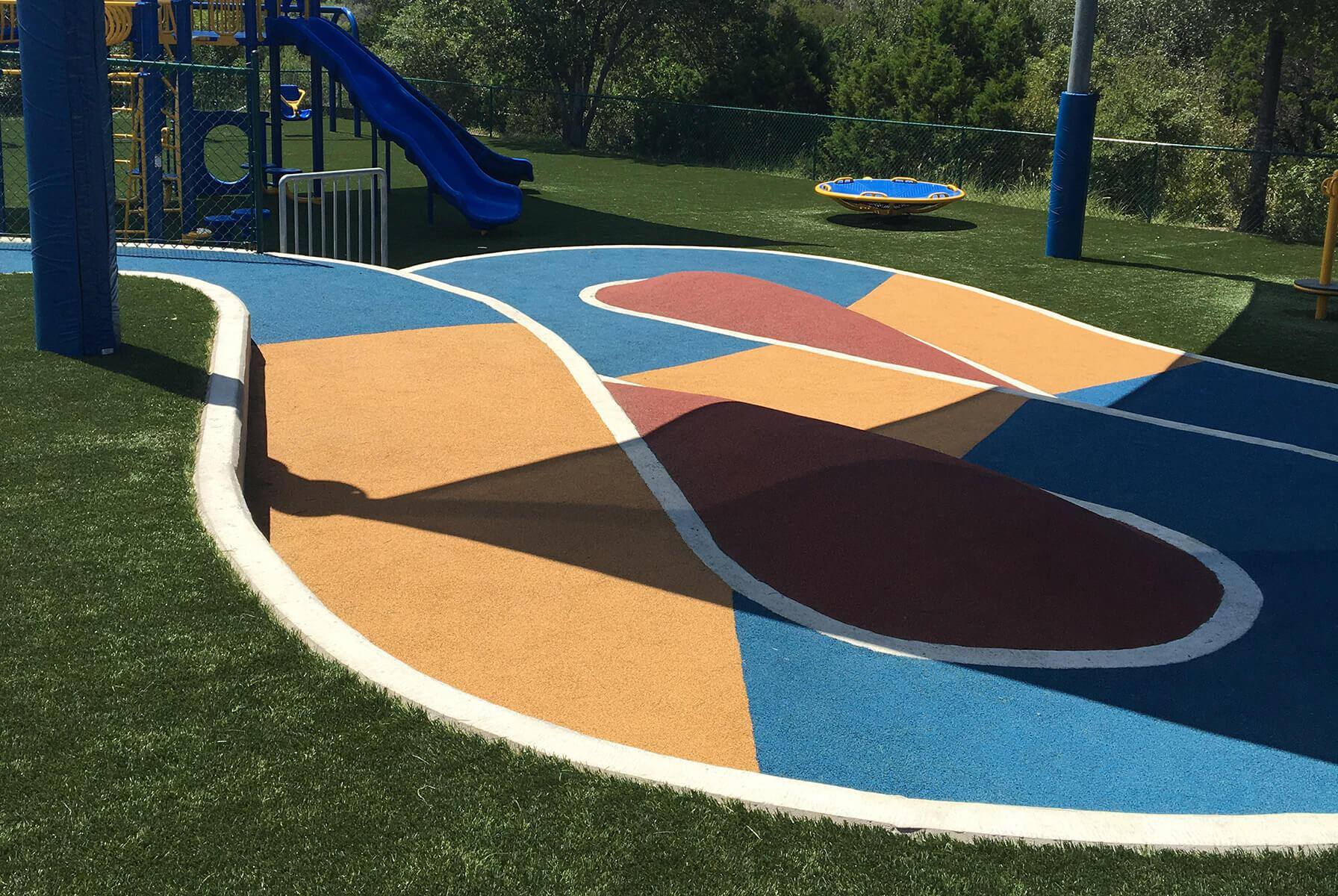 Creating interesting experiences along accessible routes of travel is another strategy for encouraging both children and adults to be more active in the recreation environment, increase connectivity of the site to the surrounding neighborhood, and expand the appeal of a park and location. The primary routes of travel should meet the accessibility standards and be properly maintained to ensure individuals with mobility impairments can traverse the surface. Designing interesting routes with sinuous curves, color enhancements, and texture can help bring additional interest as users are encouraged to move and explore.
Creating interesting experiences along accessible routes of travel is another strategy for encouraging both children and adults to be more active in the recreation environment, increase connectivity of the site to the surrounding neighborhood, and expand the appeal of a park and location. The primary routes of travel should meet the accessibility standards and be properly maintained to ensure individuals with mobility impairments can traverse the surface. Designing interesting routes with sinuous curves, color enhancements, and texture can help bring additional interest as users are encouraged to move and explore.
